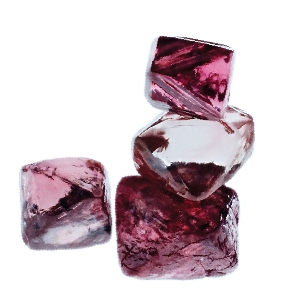How Are Rough Prices Set?
October 27, 12
By Edahn Golan
The way prices of rough diamonds are set is somewhat of mystery to many people. With the exception of those that auction their goods, such as BHP Billiton and a host of small mining companies, all of the other large suppliers prefer to keep their cards close to their chest and do not reveal their pricing information.
Very broadly, prices are set by a combination of feedback from buyers, analysis of polished diamond prices, market intelligence and, to some extent, by something that can crudely be call "gut feeling."
|
|
All of the mining companies talk regularly with their clients. They are interested in their thoughts, their feedback on how polished diamond sales are going and they want detailed feedback on the price of rough. Naturally, these clients have a tendency to view the market from their unique perspective and are predisposed to state matters in a way that can be of assistance to their own cause. Miners know and understand this subjective perspective well and take it into account.
In addition, miners always have a finger on the pulse of polished diamonds – demand and prices, and regularly follow changes in the market. Their analysis takes prices in account and allows them to reverse calculate prices. They take the price of a polished item in the wholesale market and feed it into a formula that takes into account manufacturing costs, overhead and margin and then identify the price of the relevant rough source of this polished item. In very simplistic terms, this is P - M - CoM&O = C (price minus margin minus cost of manufacturing and overhead equals cost of rough). If cost is higher than the current price of rough, then the price of rough is too low and can be increased – and vice versa.
Market intelligence, or discovery, is data collection of a different source. It may include changes in prices by other suppliers to the market and information collected from auctions. In recent years, for example, De Beers' subsidiary Diamdel has been holding auctions of rough goods that represent rough sold by the DTC. The results of these auctions are collected by the DTC and analyzed under the assumption that auctions, a place where buyers determine the price, reflect what price the market is willing to pay.
All miners employ seasoned people who know the rough market though and through. They have a good sense of where the market is heading and its needs; they know the company's clients and can asses the prices. These people will advise, if not update themselves, the company's price book.
The final decision takes into account all the collected data as well as company policies and needs.
Variations of this methodology are employed by four large rough diamond suppliers: De Beers' DTC, Alrosa, Rio Tinto and the elusive Ehud Laniado, one of the world's largest rough diamond dealers who supplies the market with goods from Angola as well as Harry Winston and Petra.
